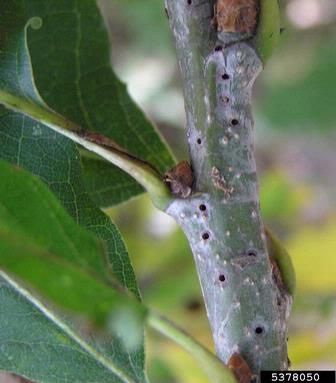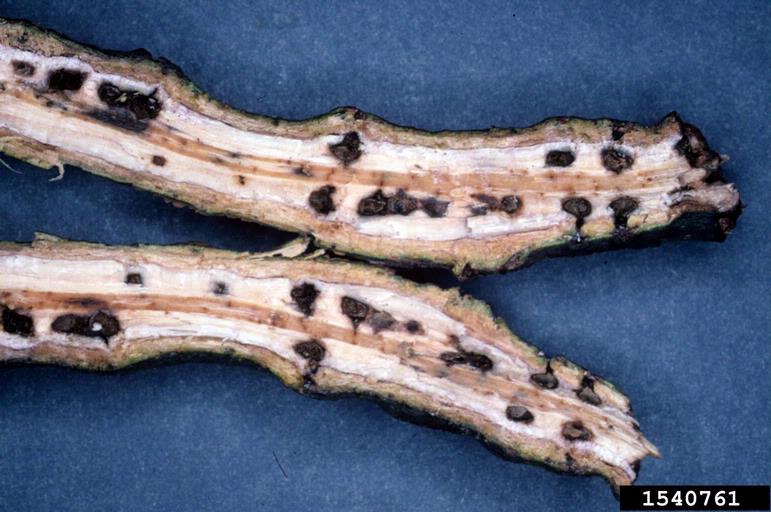I mentioned earlier this is the summer of questions for me! There are usually a few pests problems here and there within a year that I have to dig more to figure them out, but I think I hit my yearly quota in less than a month! Here is an unresolved one from about a month ago...they were too dried out by the time I got the USB microscope. In fact, this was the last push----once I sent out a couple of e-mails and asked a couple of others what they thought and came up empty, I figured that would be a good investment.
I am pretty sure this is some kind of gall-forming insect....but the tissue is not nearly swollen enough for a "normal" gall. The twigs are slightly deformed, and notice the exit holes. This is on several bur oak trees - some 40"+ dbh and in decline. It is also on a smaller bur oak. The bigger ones are not doing well. They also have Kermes scale. There were also some grade changes that certainly impacted the tree health.



And finally, the scale on this tree:

I am pretty sure this is some kind of gall-forming insect....but the tissue is not nearly swollen enough for a "normal" gall. The twigs are slightly deformed, and notice the exit holes. This is on several bur oak trees - some 40"+ dbh and in decline. It is also on a smaller bur oak. The bigger ones are not doing well. They also have Kermes scale. There were also some grade changes that certainly impacted the tree health.



And finally, the scale on this tree:


























































